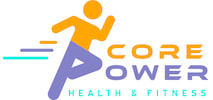STRETCH & REST CARE for the wellness warrior |
|
I'm sure you've heard about how to exercise your core muscles in your trunk area but did you know you’ve got a foot core too? We’ve got 4 layers of muscles in feet- i.e. the intrinsic muscles. 4 layers!!! Doesn’t seem like there is enough room, does it? Most of the time you only hear about the plantar fascia (connective tissue) as it gets all the attention when it’s flared up, i.e. plantar fasciitis. They may not be as vocal when you’ve got a foot injury, but the foot intrinsic muscles are important too. They make up your foot core and help provide stability of the arch and control toe movements. They play a huge role in functional movements and by helping with your balance and posture. It's very easy for them to be weak or even turned off due to tight spots in your calf and foot fascia. They LOVE to be lazy when you’re wearing cushy shoes (all that cushion in our shoes helps with impact on our joints but encourages our foot core to not work very hard). So how about we give them some love in honor of Valentine’s day? 1. DO A FOOT CORE CHECKUP. You probably know if you have a high arch, low arch or no arch but let’s see how your foot core muscles are doing. This might be easiest to do in front of a mirror where you can see your foot vs trying to look down at your foot. Or you could video and look at it after you do the moves. Stand on one leg. Hold onto a counter, wall or chair if needed to but with as little support as possible. Don’t lock out your knee- keep a soft knee. What do you see going on in the foot your standing on? Is there any flickering going on in the top of your foot tendons or any movement side to side from trying to keep from falling over? Or is your foot like a flat pancake on the floor with no arch? Or maybe it’s like a dead fish- limp, no life? Are your toes holding on for dear life to the floor, so you don’t fall over? How does it feel? Does it hurt to stand on one foot? Are you wondering where the floor is? Is it hard to balance? Are your hips working hard moving side to side to keep you upright? No judgment just look and feel what’s going on or not going on. What happens if you bend your knee slightly? Any changes? Now check out the other foot. Go through same questions and then compare to other foot. Flat arches, no signs of muscle activity on top of your foot, difficulty balancing and/or your toes flexed and trying to grip on the floor are signs your foot core muscles need some attention. One foot core may be having more issues than the other one. It'll depend on which hand you are dominant and what kind of activities you do each day. Also if you've had any injuries on one side. It doesn't matter, both sides probably need attention. 2. GIVE YOUR FOOT CORE SOME LOVE. Massage your foot core: Self-Massage on the bottom of your feet with your hands or massage tools will help release trigger points (tender spots). Keep it simple and use a tennis ball, racket ball or even dog toy if you don’t want to buy a massage tool. Roll back and forth from the ball of your foot to the heel or find tender spots to hold pressure on for a few breaths then move to another tender spot. You can do foot massage in sitting or standing. Sitting is less intense than standing. Massage the bottom of your foot as described to get to the foot core muscles. You can gently massage the top of your foot with your hands but the top (dorsum) of your foot is more sensitive and more bony. If your foot is flared up, you can do ice massage by rolling back and forth on the bottom of your with a frozen water bottle for several minutes. An added bonus to massaging your feet is that the bottom of your foot has acupressure spots for every organ in your body. When you massage your foot, you’re sending calming signals to your whole body. Stretch your foot core: Stretching the tight spots in your toes, ankles, and calves in sitting or standing can help your foot core turn on.
Strengthen your foot core: Full body and barefoot workouts like Yoga or Pilates will help strengthen your foot core.
Challenge your foot core: Pilates Reformer work, unstable surfaces (like Bosu ball or foam surfaces) and doing band work resistance exercises barefoot are some of my favorite ways to challenge the foot core. Support your foot core: Good arch support will help keep your foot in good alignment which helps your foot core turn on properly. You might need some extra arch support if you have very flat feet or high arches, stand a lot each day, or do an impact sport like running. It could be a simple over the counter foam insert to a custom orthotic. Typically, the liner that comes in your shoe is crap. You’re not looking for a huge build up under the arch. Just a little arch support so it’s not completely collapsed, and you aren’t getting pain in your feet or knees with activities. You can learn from a health professional how to use kinesiotape to calm down foot pain if you get flare ups and support your arch but it’s important to also strengthen your foot core to help avoid foot injuries. 3. DO A RECHECK. If you try any of the above foot care tips, recheck to see how your foot core is doing. Stand again on one leg and see what’s going on down there. Do you see more activity on the top of your foot, have better balance and/or a little bit of arch activity where there is some space between your foot and the floor? How does it feel? Hopefully you’ll feel more contact with the floor and more grounded or stable overall. Even though your feet are at the end of the line, they’re the first body part in contact with the ground which then causes a chain reaction up the leg and into your trunk muscles. They need just as much love as the rest of your body. Just a few mini moves for the foot core make a big difference in your posture and balance. Give your foot core some love each day! Mollie P.S. Want more tips on how to check your form? Here's a Fit Blog that'll help. Want more massage tools & stretch routines to support and challenge your foot core (and hip core) We’ll show you how in HIP Camp™.
0 Comments
Leave a Reply. |
Mollie Miller, PT
|
TERMS OF USE PRIVACY POLICY
Core Power Health & Fitness, Inc. does not provide medical advice. Consult a licensed physician prior to beginning any exercise or nutrition program.
Copyright © 2015 Core Power Health & Fitness Inc.
Core Power Health & Fitness, Inc. does not provide medical advice. Consult a licensed physician prior to beginning any exercise or nutrition program.
Copyright © 2015 Core Power Health & Fitness Inc.


 RSS Feed
RSS Feed